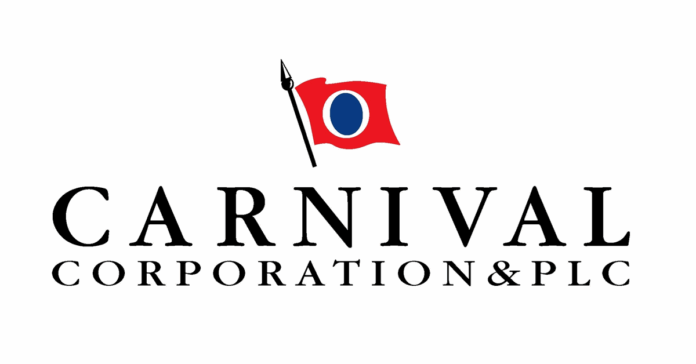Carnival Corporation & plc (CCL) shares initially surged after its Q2 2025 earnings release showcased record-breaking financial performance, exceeding guidance and signaling a robust recovery.
The Miami-based company, the world’s largest cruise operator, reported net income of $565 million, a nearly $475 million improvement over Q2 2024, and record revenues of $6.3 billion, driven by strong demand and onboard spending. This performance, coupled with an optimistic 2025 outlook, has positioned CCL as a compelling investment opportunity, with valuation models indicating the stock is significantly undervalued.
Record-Breaking Q2 2025 Performance
Carnival’s Q2 2025 results, announced on June 24, 2025, highlighted its strongest second-quarter operating results ever. Adjusted net income soared to $470 million, tripling last year’s figure and beating March guidance by $185 million. Record net yields (in constant currency) rose 6.4% year-over-year, surpassing expectations by 200 basis points, fueled by higher ticket prices and robust onboard revenue. Operating income reached a record $934 million, and adjusted EBITDA hit $1.5 billion, a 26% increase from Q2 2024. The company also achieved an all-time high in customer deposits at $8.5 billion, reflecting strong booking momentum for 2026 at historical high prices.
CEO Josh Weinstein attributed the success to the company’s “phenomenal” team and strategic focus on high-margin revenue growth. “Our amazing team delivered yet another phenomenal quarter, more than tripling adjusted net income driven by record net yields and strong close-in demand,” Weinstein said. He emphasized resilience amid macroeconomic and geopolitical challenges, noting consistent outperformance that enabled Carnival to exceed its 2026 SEA Change financial targets 18 months early, including a 20% reduction in carbon intensity from 2019 levels.
Financial Health and Strategic Moves
Carnival’s financial health improved significantly, with a 50% increase in its revolver capacity to $4.5 billion in June 2025 and a net debt-to-adjusted EBITDA ratio improving to 3.6x from 4.1x. The company refinanced nearly $7 billion in debt at favorable rates, reducing interest expenses and moving closer to an investment-grade credit rating. Chief Financial Officer David Bernstein highlighted ongoing efforts to reduce interest costs and simplify the capital structure, with $5 billion in debt reduction planned for 2025–2026.
Operationally, Carnival reduced fuel consumption per available lower berth day (ALBD) by 6.3% compared to Q2 2024, surpassing guidance due to energy efficiency investments. Adjusted cruise costs excluding fuel per ALBD rose 3.5%, slightly better than expected, despite higher dry-dock days. The company also announced new initiatives, including two newbuilds for AIDA Cruises (delivery in 2030 and 2032) and the “Carnival Rewards” loyalty program launching in June 2026, a cruise-industry first tied to spending.
Management’s 2025 Outlook
Management’s outlook for 2025 is bullish, projecting adjusted net income of approximately $2.3 billion, a 20% increase over 2024’s $1.9 billion, and adjusted EBITDA of $6.6 billion, up $500 million. Adjusted EPS is forecasted at $1.83, with analysts estimating $1.88 (range: $1.77–$2.01). Net yields are expected to grow 4.2% in constant currency, driven by strong demand and premium pricing for new destinations like Celebration Key, opening in July 2025. Adjusted cruise costs excluding fuel per ALBD are projected to rise 3.7%, reflecting investments in advertising and Celebration Key operations. Interest expenses are expected to drop by over $200 million compared to 2024, supporting profitability.
Weinstein noted, “Our strong results, booked position, and outlook are a testament to the success of our ongoing strategy. We continue to set ourselves up well for 2026 and beyond, with so much more potential to take our margins, returns, and results even higher.”
Valuation Analysis: A Screaming Buy
Using the Buffett and McGrew valuation methods, CCL appears significantly undervalued based on its last closing price of $25.75 on June 24, 2025. The Buffett Valuation, which assumes a 10% growth rate for 10 years due to Carnival’s recovery trajectory, yields an intrinsic value per share of $50.38. The McGrew Valuation, incorporating a 20% initial growth rate declining to 10% by Year 7, estimates an intrinsic value of $65.51. Both methods use a 2.5% perpetual growth rate and an 8% discount rate, with calculations based on five years of free cash flow (FCF) data from 2020–2024, where 2024 FCF was $1.914 billion.
The following table summarizes the valuation results:
| Stock Ticker | Valuation Method | Intrinsic Value per Share | Price with 25% Margin of Safety | Last Closing Price | Valuation Status |
|---|---|---|---|---|---|
| CCL | Buffett Valuation | $50.38 | $37.79 | $25.75 | Screaming Buy |
| CCL | McGrew Valuation | $65.51 | $49.13 | $25.75 | Screaming Buy |
Both valuations classify CCL as a “Screaming Buy,” as the closing price is well below 75% of the intrinsic value ($37.79 for Buffett, $49.13 for McGrew). This suggests significant upside potential, driven by Carnival’s post-pandemic recovery, debt reduction, and strong demand outlook.
Financial Metrics and Risks
Carnival’s trailing 12-month (TTM) Return on Equity (ROE) stands at 26.88%, reflecting robust profitability relative to equity, though amplified by a high debt-to-equity ratio of 309.25%. The TTM Return on Tangible Assets (ROTA) is 4.35%, below the industry average, indicating moderate returns on its capital-intensive operations. These metrics highlight Carnival’s leverage-driven profitability but also its exposure to debt-related risks.
Despite the strong outlook, risks remain. Management noted macroeconomic volatility, including potential tariff impacts, and rising costs for new initiatives like Celebration Key. Fuel price fluctuations and geopolitical uncertainties could also challenge projections. However, Carnival’s record booking levels and operational efficiencies provide a buffer against these headwinds.
Investment Implications
Carnival’s Q2 2025 performance and 2025 outlook underscore its recovery momentum and strategic execution. The valuation models suggest the stock is trading at a significant discount, making it an attractive opportunity for investors seeking exposure to the cruise industry’s rebound. With planned debt reduction, new loyalty programs, and exclusive destinations like Celebration Key, Carnival is well-positioned for sustained growth. However, investors should monitor macroeconomic risks and cost pressures that could impact future performance.
Data Sources and Notes: Financial data was sourced from Carnival’s Q2 2025 earnings release, Yahoo Finance, and provided financial statements. The closing price of $25.75 was verified with Yahoo Finance and Google Finance. FCF calculations used 2020–2024 data, with negative FCF in 2020–2022 due to the pandemic requiring growth rate assumptions (10% for Buffett, 20% declining to 10% for McGrew). Limitations include the unsustainable 403.7% FCF CAGR (2023–2024), moderated to reflect realistic growth, and potential macroeconomic risks affecting forecasts.
#CarnivalCorporation #CCL #CruiseIndustry #StockValuation #Q2Earnings #Investing #BuffettValuation #McGrewValuation #StockMarket #TravelSector

